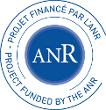Drawing is a powerful support for creation and communication but requires significant artistic and technical skills to achieve convincing results. The goal of the DRAO project is to facilitate and accelerate drawing for amateurs as well as for expert designers and illustrators, with a particular emphasis on drawing plausible material and lighting effects.
More specifically, we explore the following research directions:
- Understanding how people draw. We will conduct observational studies and interviews of professional designers and illustrators.
- Automating parts of the drawing process. We will deduce from our observations new user interfaces and rendering algorithms that enrich 2D drawing tools with realistic rendering capabilities. In particular, our goal is to generate plausible depictions of material and lighting over the drawing.
- Teaching people to draw. We plan to use tangible interfaces and augmented reality to help amateurs draw complex images.
In summary, DRAO should make amateurs more confident in their drawing skills and should allow expert designers to produce complex illustrations more effectively.
News
November 2016 | Award
The coordinator of the DRAO project, Adrien Bousseau, received a young researcher award from the French National Research Agency (ANR).
May 2016 | Paper
The DRAO project ends with a collaborative publication at ACM CHI, the top conference in human-computer interaction! We present a study on how novices generate, explore, and communicate design ideas with traditional tools, i.e., sketches on paper and hands-on prototyping materials. Based on our observations, we propose design guidelines for CAD tools targeted at novice crafters.
November 2015 | Paper
Our paper on jewelry design will be presented at SIGGRAPH Asia 2015. We present an end-to-end system to create unique jewelry pieces from line drawings. Our algorithm decomposes the drawing into wire segments according to aesthetic and fabrication objectives. We then generate a custom support structure to bend metal wires into the target shape.
August 2015 | Paper
Our paper on normal estimation from rough sketches will be presented at SIGGRAPH 2015. We present an algorithm capable of estimating the curvature directions and surface normal at each pixel of a drawing. The main strength of our approach is its robustness to rough sketches made of multiple pen strokes.
June 2015 | Paper
Our paper on line drawing interpretation in context will appear at CVPR 2015. Our tool allows users to draw extensions of a real scene. Our algorithm exploits a 3D reconstruction of the real scene to interpret the drawing and turn in into a 3D model.
August 2014 | Paper
We presented our paper on 3D modeling from concept sketches at SIGGRAPH 2014. Our algorithm estimates 3D curves from a single drawing of an object.
June 2014 | Paper
We have presented our paper on layered image vectorization at EGSR 2014. This tool facilitates the creation of vector art from photographs that include semi-transparent effects like shadows and highlights.
November 2013 | Paper
Our paper on non-oriented gradient fields will appear in Computer Graphcis Forum. This formulation enables a variety of applications, including line drawing simplification.
October 2013 | Paper
We will present our paper on helping people to draw at UIST 2013.
July 2013 | Paper
We presented our paper on depicting materials in vector graphics at SIGGRAPH 2013.
December 2012 | Paper
The first paper related to DRAO has been presented at SIGGRAPH Asia 2012. The paper presents a new solver for the rendering of smooth color gradients in vector graphics.
October 2012 | Start of the project
The DRAO project officially started in October 2012 and all partners came to Sophia Antipolis for the kick-off meeting.



 Menu
Menu See also
See also Contact
Contact